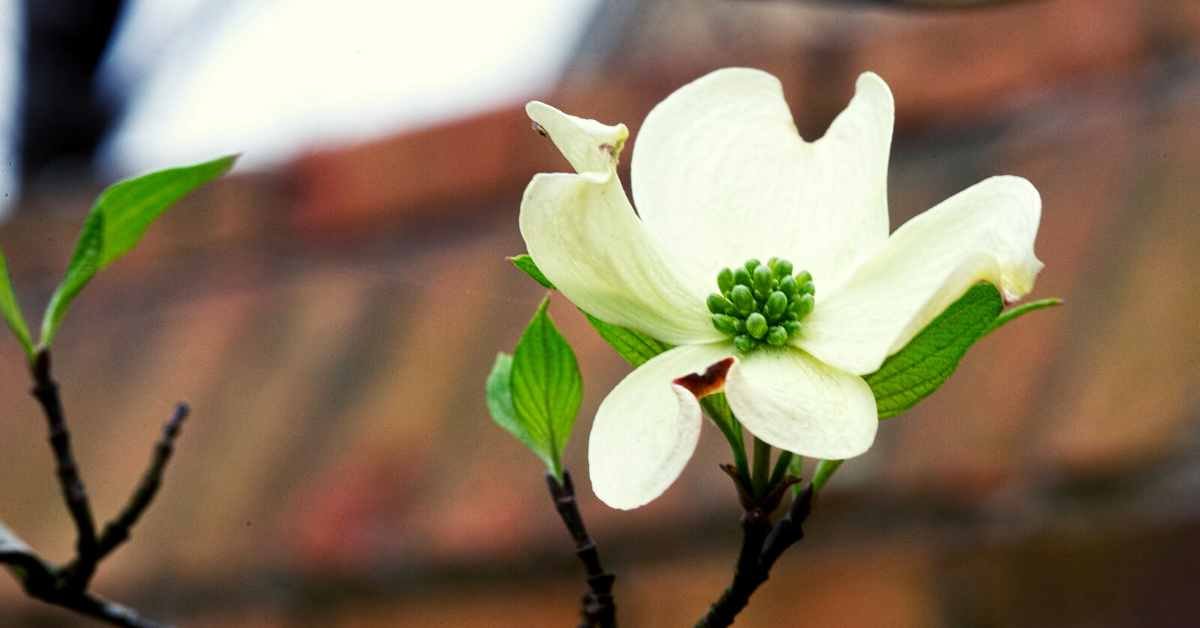
At first glance, it might seem like a simple yes-or-no answer: are Dogwood plants poisonous? But the truth is, it’s much more complex than that. As with any plant, its potential toxicity depends on a variety of variables. So the short answer is: it depends.
Let’s dive in and explore the fascinating world of Dogwood plants and explore the different degrees of toxicity they might have.
So, Are Dogwood Plants Poisonous?
When it comes to dogwood plants, it’s natural to wonder if they are poisonous or not. After all, when we think of small-scale gardening, we often think about edible plants and the safety of our family.

“As an Amazon Associate, I earn from qualifying purchases.”
The answer, it turns out, depends on the species in question.
Most types of dogwood trees produce fruit, but a few species, notably the Flowering Dogwood (Cornus florida), produce berries that are poisonous to humans. Although the vines, leaves, and bark of dogwood are not edible, certain species may cause skin rashes in those who come into contact with them.
It’s important to remember that not all dogwoods are poisonous and that most of the species grown for their beautiful blooms and attractive bark are generally considered safe.
However, if you’re planning to plant dogwood trees and there’s a chance that humans may come into contact with them, it’s always a good idea to do some research and double-check the exact species before planting.
Is the Dogwood Bark Poisonous?

Now, when it comes to the use of dogwood bark, the jury is out. But there is evidence to suggest that Native Americans have used it to treat a variety of conditions, such as reducing fever, acting as an astringent, and combating diarrheal issues.
It is also said to be a pain reliever for headaches, sores, and muscle inflammation.
In addition to these, it’s widely believed that the bark could even counter the effects of some poisons and was used as a tonic to treat a range of unknown ailments.
It’s also thought to provide throat aid, as well as headache and backache relief. But it’s important to understand that the medicinal properties of this bark are mainly anecdotal, since there is no scientific evidence to back up these claims.
But what about its potential for toxicity? Well, although excessive consumption might be harmful, dogwood bark does not appear to be particularly toxic or dangerous.
Are Dogwood Petals Poisonous?

If you have a dogwood tree in your garden and you’re wondering if its petals or fruit are poisonous to humans or pets, here’s the answer: Dogwood petals are not poisonous, but the fruit of certain types of dogwood (like the flowering dogwood, Cornus florida) is toxic to humans.
The flowering dogwood tree is native to Eastern North America. It’s a small, deciduous tree with white (or sometimes pink) blooms from March-May, followed by small red berries in late summer, which grow in clusters.
Are Dogs Attracted to Dogwood Trees?
When it comes to trees, dogs have their own set of preferences. They tend to prefer trees with bark and leaves that they can interact with.
Dogwood trees, in particular, are a delight because they have broad leaves and an abundance of flowers. Dogs often find it fascinating to inspect this type of vegetation as they explore their surroundings.
But why are dogs so attracted to dogwood trees? Well, the answer may actually have little to do with the trees themselves and a lot more to do with the surrounding environment.

The dogwood trees offer a source of comfort and refuge from the elements. Dogs love to curl up in the moist mulch that the trees provide. Since the dogwood tree is a deciduous tree, its mulch provides a natural habitat for the dog.
Frequently Asked Questions
Now we will answer the most frequently asked questions.
Is dogwood poisonous to dogs?
The good news is that dogwood is generally not considered to be toxic to dogs when eaten in small amounts.
However, it’s still important to be aware of potential risks associated with feeding your pup dogwood, as certain parts can cause gastrointestinal distress.
Is dogwood poisonous to cats?
The answer is – fortunately – no, dogwoods are considered non-toxic and not poisonous for cats. However, it is important to note that dogwoods are not edible for cats either. Some species of dogwoods drop off berries which a curious cat may try to eat, but these berries can cause digestive upset in cats and should be avoided.
Is dogwood poisonous to rabbits?
Finding out whether something is safe to eat happens to be one of the primary concerns of curious rabbit guardians. Fortunately, the answer to this question is that dogwood bark is safe for rabbits to consume.
Although some bunnies might not be interested in snacking on this specific wood, many of them do take a liking to it along with the other wood types that are available.
Is dogwood poisonous to humans?
The root bark of Flowering Dogwood has long been used by Native Americans for various medicinal purposes. In smaller doses, it was used as an antidiarrheal, a fever reducer, a muscle inflammation soother, and a skin astringent. All of this goes to show that, in small doses, dogwood can be safely used by humans.
On the contrary, the same tree whose root bark is a beneficial tonic also produces a poisonous fruit. Though the fruit’s toxicity is much less potent than some other commonly consumed plants like oleander, it is still best to avoid consuming the fruit of the dogwood, as it may cause stomach upset, headaches, and dizziness in addition to other uncomfortable symptoms.
Conclusion
It can be said that not all dogwood plants are poisonous. Some species of dogwood are safe for humans to consume, while others are toxic. It is important to make sure you know the species of dogwood you are dealing with in order to ensure that you do not consume something that is poisonous.
- You will receive healthy bare root plants. We always send extra plants. We want to make sure you are completely satisfied.
- You will see growth within 10 days. The most importan part of planting these plants is to make sure you have at least 30% sand mixed into the soil.
- Asparagus plants need three things: 1. Any soil but at least 30% sand needs to be added and mixed well. The sand is the most important part and without it they will die: the soil needs to be well draining and 30 percent sand needs to be mixed thoroughly and plant on a mound six inches apart. I will send a picture 2. The plant can soak in water for an hour and then plant. 3.Plant the asparagus plants 10″ to 12″ down the further north the deeper and 12″ apart and just bury them
- The sand is important for drainage and winterization of the plant and with out them they can rot and not come back the next year.
SHARE ON PINTEREST

Other Great Posts:
- Can You Eat Dogwood Berries
- Dogwood Meaning and Symbolism
- Begonia Care and Info
- 5 Best Garden Carts for Seniors








